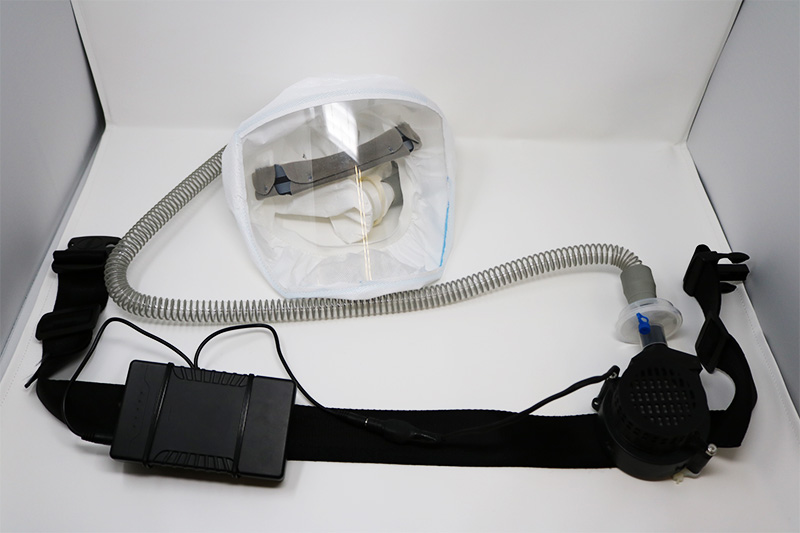
Center for Medical Innovation
Current Projects
The project listed below are in response to the ongoing COVID-19 outbreak.
All equipment, reports, and ongoing projects are intended to be used only as a method-of-last-resort, in a situation requiring extraordinary live-saving measures.
| Category | Project | Current Activity | Status | Clinical Use | Next Steps |
| PPE | Powered Air Purifying Respirator (PAPR) | on-going | Production of PAPR units | ||
| 3D Printed PAPR helmet adapter: |
Connection for hose designed |
Completed | Retrofit PAPR systems to expand PPE options | ||
| Reusable face shields: |
|
||||
| Ventilation | Noninvasive ventilation Bubble CPAP | ||||
| Containment | Portable Aerosol containment shield |
Updated 16 April 2020
Reusable Respirator System to Protect Health Workers during COVID-19
In response to the overwhelming demand for Personal Protective Equipment (PPE) due to COVID-19, we've designed an enclosed Powered Air Purifying Respirator (PAPR) system to provide health care workers safe and reusable PPE when working with COVID-19 patients.
Designed to fully enclose the user, a PAPR system consists of a hood or helmet and a filtered respirator to provide those wearing the system a constant flow of clean air. This positive pressure prevents entry of unfiltered air and protects the health worker from inhaling aerosolized COVID-19 particles.
By combining readily available components such as mobile battery packs, portable fans, and replaceable medical grade filters with several 3D printed adapters, the assembled PAPR system designed by CMI expands the options to protect health workers treating COVID-19 patients.
Using a standardized rating system known as “Fit Factor”, PAPR systems typically rate somewhere between 200 and 1000 on the quantitative fit testing scale. This means the system reduces the concentration of 0.3 micron aerosolized particles inside the system by 200 to 1000 times when compared to the air outside the hood. The PAPR system developed by the CMI was assessed by the Rocky Mountain Center for Occupational and Environmental Health at the University of Utah and offers a Fit Factor of 400 or better.
Download the PAPR system assembly instructions.
| 3D Printed Component | Download Available |
| Filter Bracket | 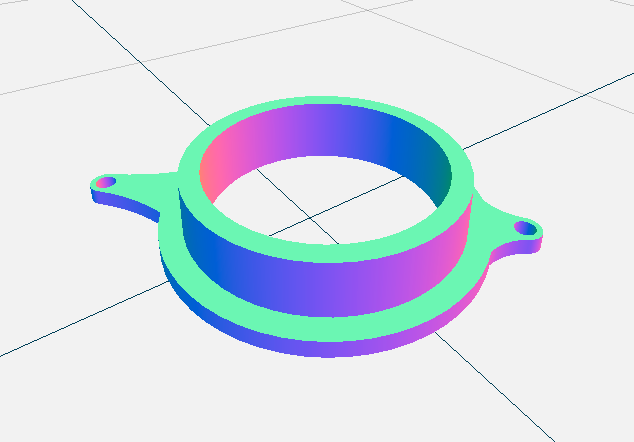 |
| Filter Cage | 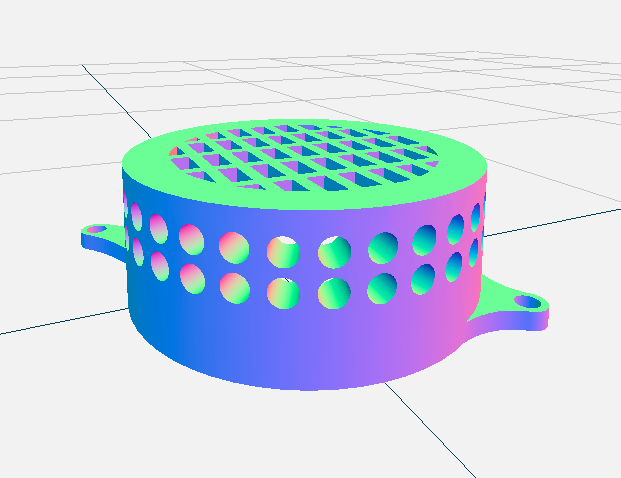 |
| Fan Output Adapter | 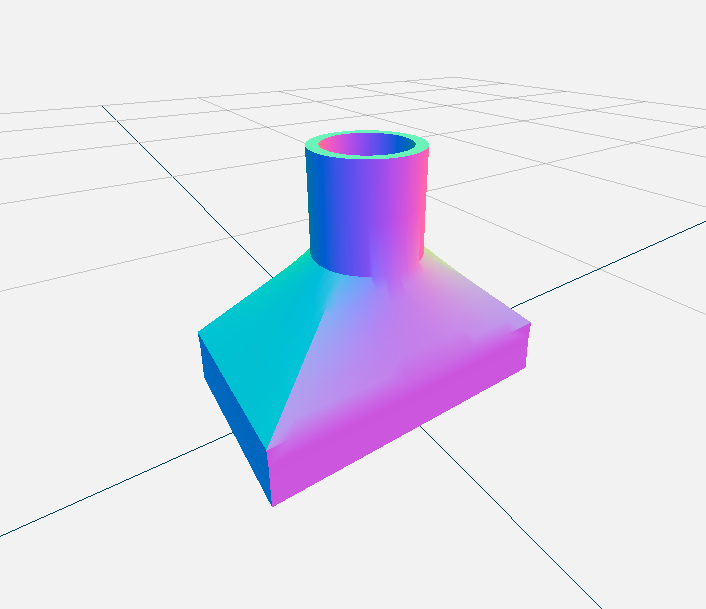 |
| Hose to Hood Adapter | |
| Hood |
To learn more about the PAPR system developed by CMI, read the announcement here: CMI Develops Reusable PAPR system to protect health workers
Updated 31 March 2020
3D Printed PAPR Helmet Adapter
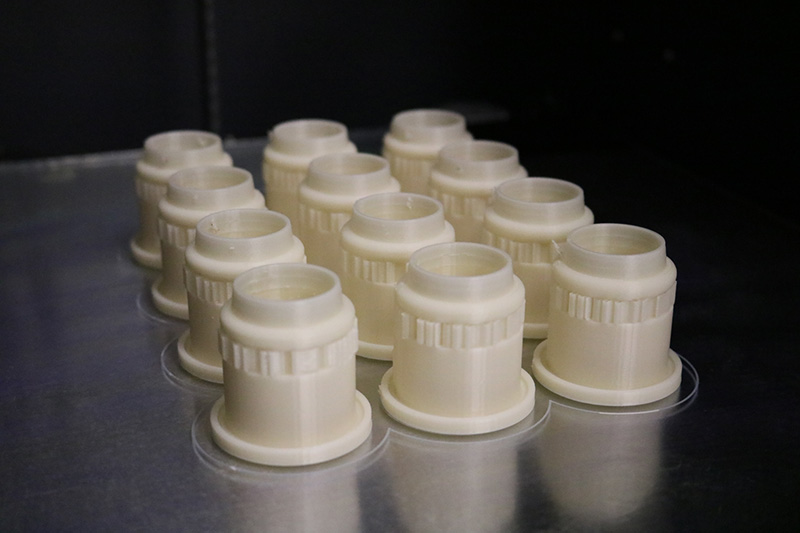
This 3D printed adapter connects older models of Powered Air-Purifying Respirator (PAPR) helmets to the filtration equipment on newer models, enabling hundreds of previously unusable helmets to be worn safely and comfortably by health care workers.
Designed to fully enclose the user, a PAPR system consists of a bodysuit (similar to those worn by technicians in clean-room settings), a helmet, and a continually operating respirator with filter to provide those wearing the system a constant flow of clean air and prevent any potential contamination from entering the helmet.
As the University of Utah Hospital braces for a potential surge of COVID-19 patients, all options to expand the supply of Personal Protective Equipment (PPE) are being explored. This includes retrofitting older pieces of still viable equipment to the newer systems. PAPR systems have the benefit of being reusable and can drastically cut down on the consumption of single-use PPE.
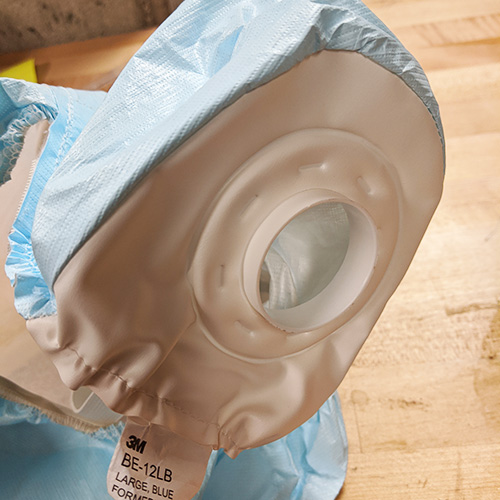
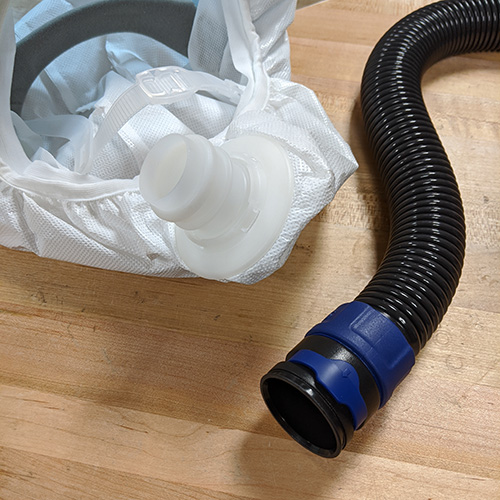
Measuring approximately two inches wide and just under two inches tall, the adapters are 3D printed using a rigid thermoplastic. CMI has reached out to other groups on campus and local manufacturers with 3D printers to help supplement the printing process

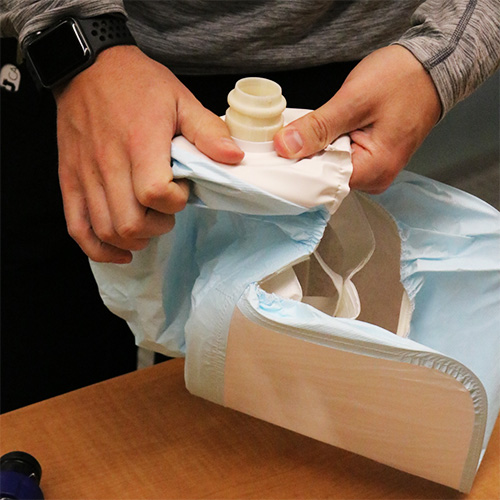
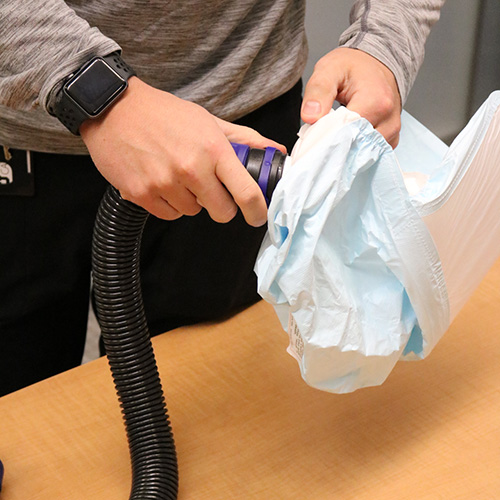
To support of these shared efforts, the Center for Medical Innovation is releasing the technical schematics for the adapter, including files for 3D printing and assembly of the PAPR helmets, available at the links below:
- Download the PAPR Adapter STL.
- Download the PAPR adapter assembly instructions.
- Download the PAPR adapter technical reference sheet.
Updated March 27, 2020
Reusable Face Shield
The CMI contributes to the fight against COVID through innovation and development of critically needed equipment to protect our health providers. CMI’s reusable face shield protects the provider’s face not only from the front but also along the sides and neck. Development and future production are being explored via the generosity of local manufacturer OC Tanner.
The link below provides CMI’s technical schematics for those individuals or groups interested in producing face shields for their own community. *Before beginning construction, be sure to check with your local health care providers to see whether they need these shields, and to confirm whether they can accept these face shields. Please don't buy local supplies unless you have confirmed a local need!
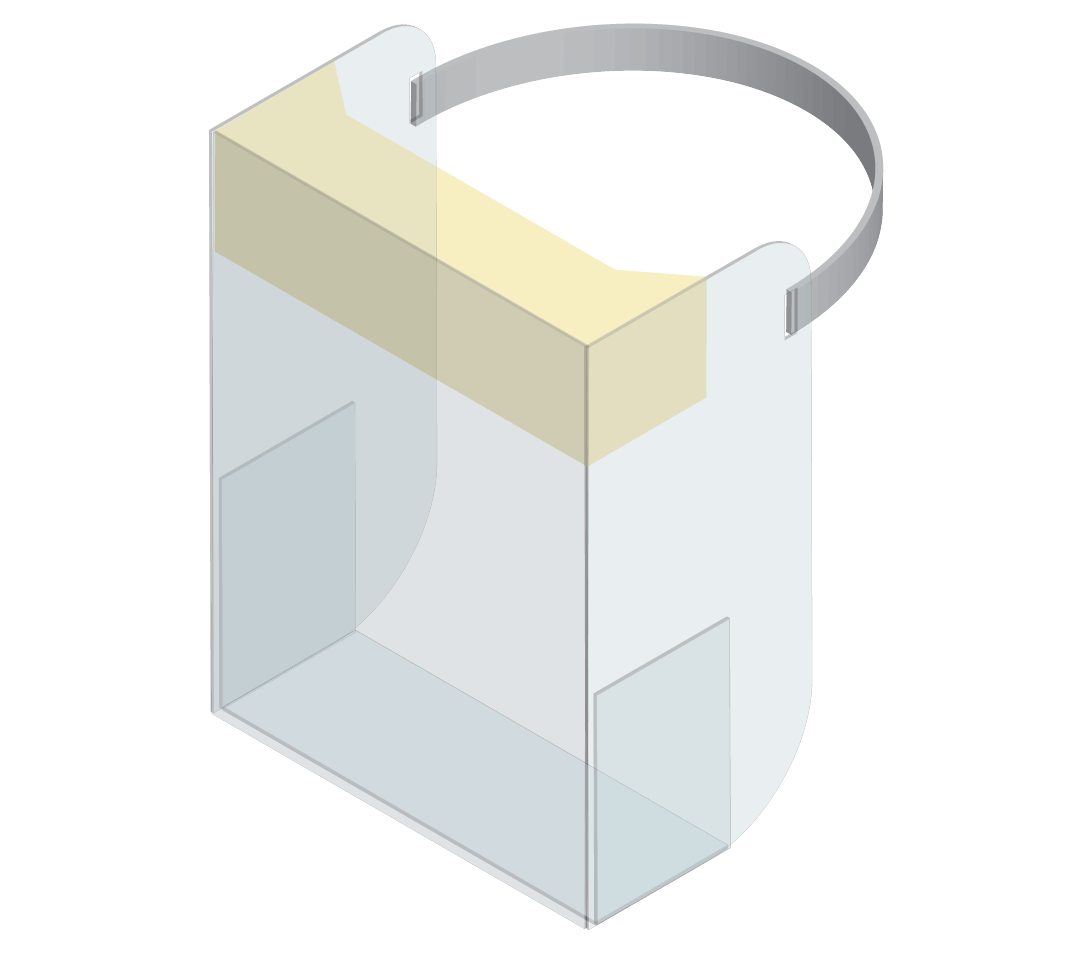
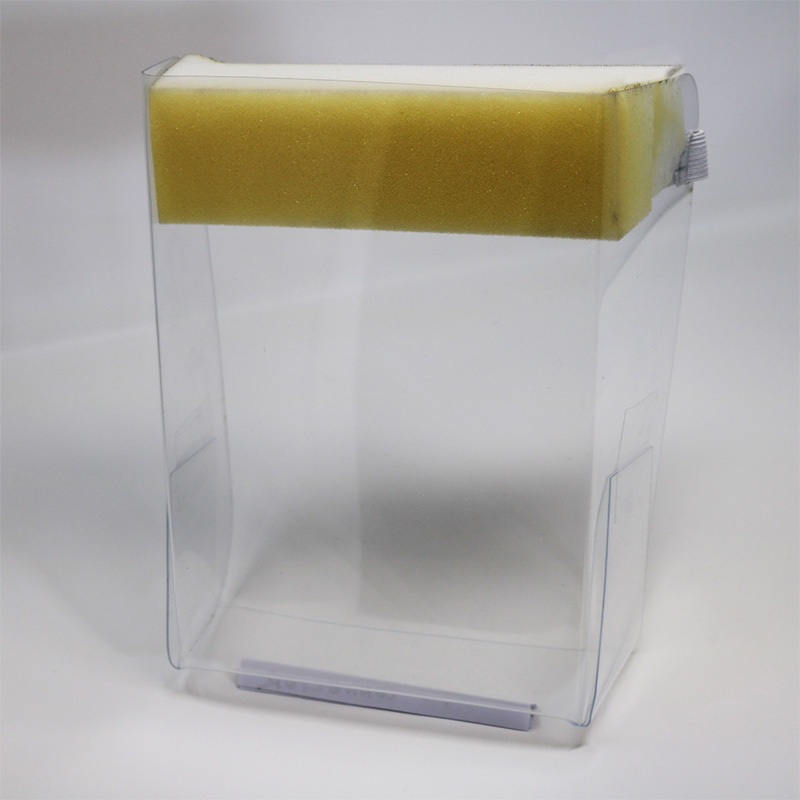
- Download the Face Shield Assembly Instructions
- Download the Technical Reference Guide
- Download the Cutting-tool Pathway
Noninvasive "Bubble" CPAP System
Ventilator shortages are a huge challenge to manage critically ill patients with COVID-19 who need respiratory support. One way to ease the demand is using a Continuous Positive Airway Pressure (CPAP) system. Our team has adopted an innovative approach to developing a “Bubble CPAP” system, using readily available supplies, such as OR vent tubing and wall oxygen and compressed medical air. This closed system can deliver CPAP without use of a breathing machine or ventilator. Use of CPAP has shown to decrease the need of ventilator use by up to 50%[1].
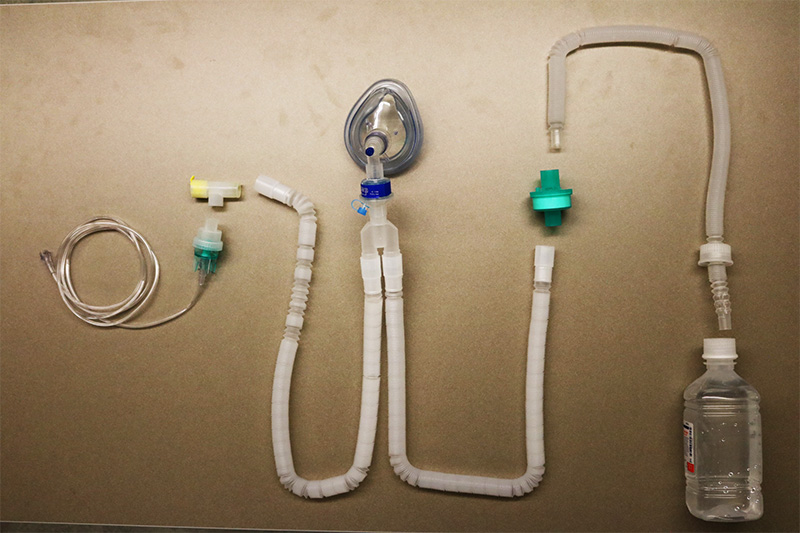
The list of components includes:
- Oxygen Intake
- T-Connector (female connector capped with air-tight seal)
- Adult Anesthesia Circuit Packet
- In-line filter (part of adult vent circuit)
- Pediatric Vent Tubing
- 1L NS Bottle with hole in top cap
- Exhalation loop "bubbles"
We’re currently working to develop best-practice instructions for assembly and identify potential substitution components in the event of supply shortages.
Updated 14 April 2020
REVISED: Portable Droplet / Aerosol Containment Shielding
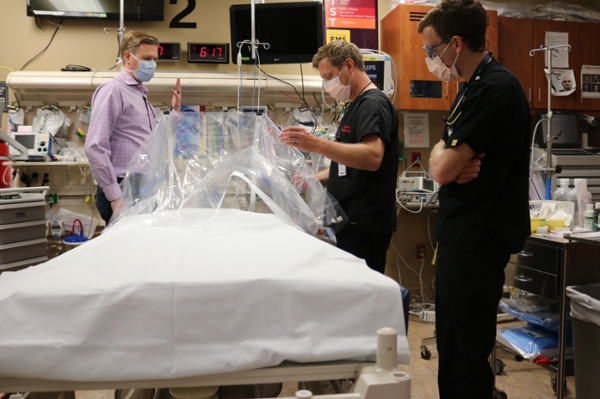
Exposure to aerosolized coronavirus is a huge health risk for professionals. Completing tasks such as intubation or nebulized breathing treatments pose a significant risk with COVID-19 patients. This updated version of an aerosol / droplet containment tent gives more portability to health care providers, and offers greater access to a patient. It also has the added benefit of disposable plastic sheeting.

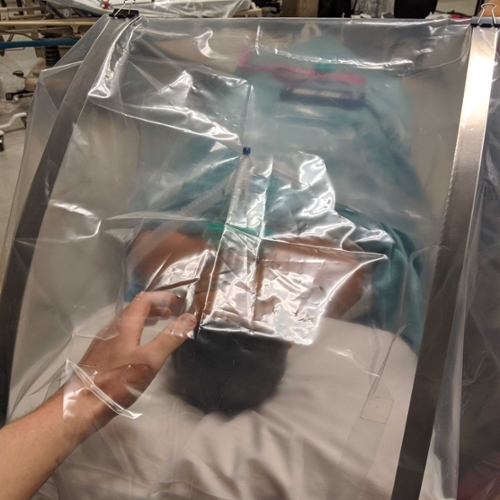
Several of these aerosol containment shields are currently being field-tested with groups at University of Utah hospital.
Instructions on the materials necessary to fabricate these tents are available from CMI for free.
Download the Aerosol Containment Tent Instructions.
Aerosol Containment Box
Exposure to aerosolized coronavirus is a huge health risk for professionals. Completing tasks such as intubation or nebulized breathing treatments pose a significant risk with COVID-19 patients. In response the CMI designed a negative airflow headbox which traps aerosolized secretions, removes them through a fan and filter system and protects the provider, while still providing the optical clarity and space necessary for the health care provider to perform their crucial work.

[1] - Role of Noninvasive Ventilation in Acute Lung Injury/Acute Respiratory Distress Syndrome: A Proportion Meta-Analysis. Agarwal et al. Respir Care55 (12), 1653-60; Dec 2010.
